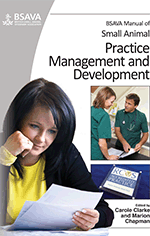
Full text loading...

Laboratory services in a small animal general practice are often provided by external laboratories. There are, however, core tests that are usually offered in house by practices, and many practices have extensive in-house provision. This chapter assesses the need for in-house testing, designing and installing a practice laboratory, and laboratory management.
Laboratory diagnostic services, Page 1 of 1
< Previous page | Next page > /docserver/preview/fulltext/10.22233/9781910443156/9781910443156.14-1.gif

Full text loading...









